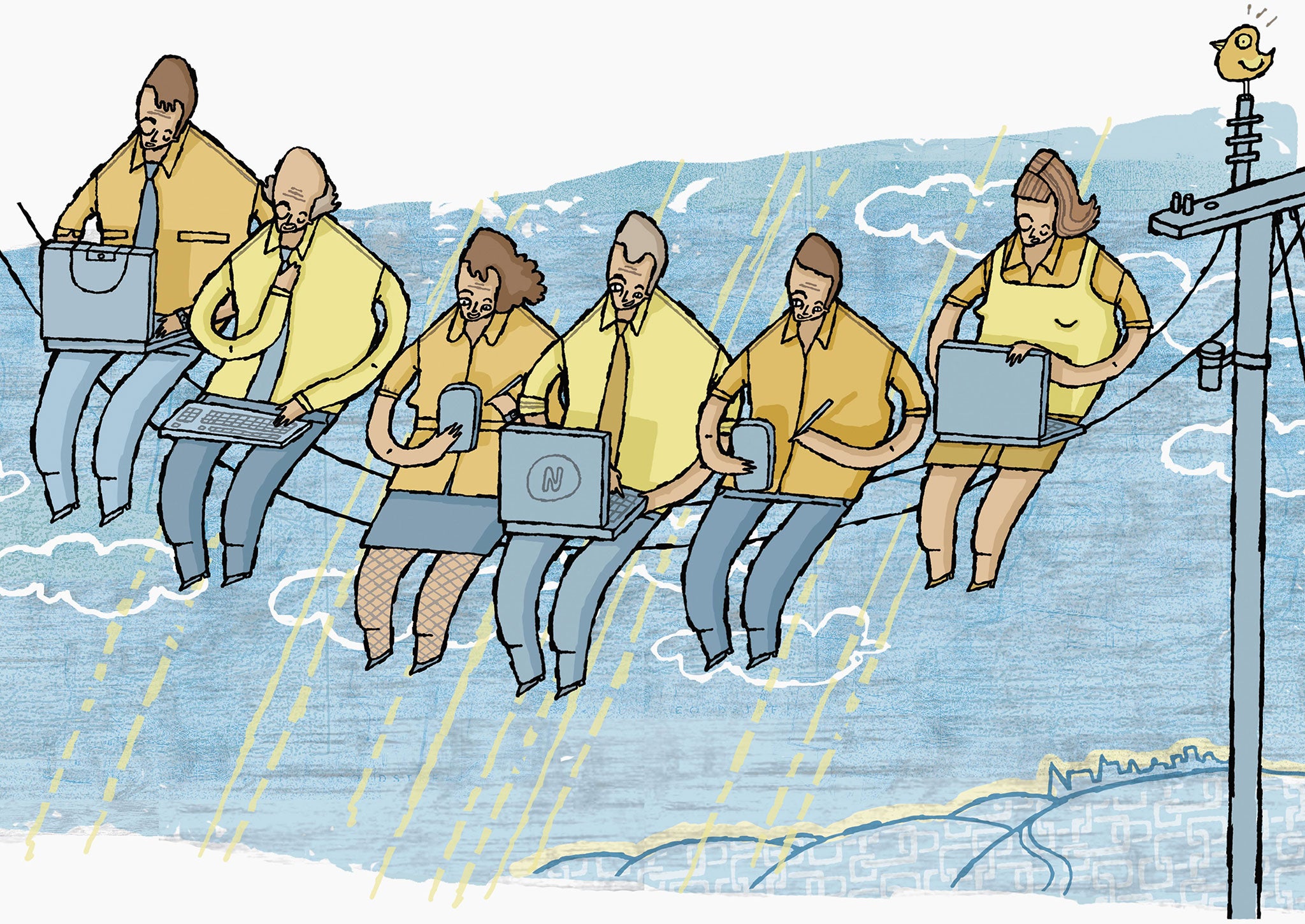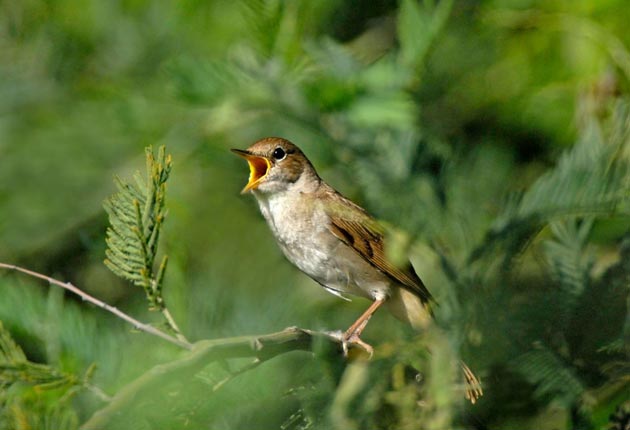The Independent's journalism is supported by our readers. When you purchase through links on our site, we may earn commission.
Nature Studies: It’s not only humans who learn from tweeting the latest trends
A new study has revealed that birds don't always act instinctively, but have their own social networks and cultures too

It now seems ironic that one of the most popular forms of social networking the world over is called Twitter, which is done by sending tweets with the icon of a small bird – when small birds themselves are busy socially networking anyway.
Songbirds are using their networks to learn behaviour from each other, which they then conform to, just as a fashion can spread on Twitter or Facebook or Instagram or any of the other electronic ways of getting in touch which we think we are so clever and cool to have invented.
This has been shown in a stunningly-inventive piece of research from Oxford University, which demonstrates for the first time the spread of culture in a wild animal other than primates (the ape and monkey family).
The fact that animals possess culture, which can be defined as the transmission of behaviours from one generation to the next, has only really been appreciated for half a century or so – previously it was assumed that everything they did was instinctive.
But a key moment was the discovery, by Dame Jane Goodall, the world’s leading expert on wild chimpanzees, that animals can use tools: in November 1960 she observed a chimp she had named David Greybeard “fishing” for termites, by poking a stick into the termite mound; and subsequent research has shown that chimps and other primates have learned to use tools in various ways.
However, an even earlier example of learned behaviour was under our noses – or rather, on top of our milk bottles. Sometime probably in the 1920s – nobody really knows when – British blue tits and great tits worked out that if they pecked a hole in the silver foil tops of bottles of milk, standing on doorsteps, they could drink the nourishing cream just underneath.
This behaviour, which seems to have died out now, not least as impenetrable plastic cartons have largely replaced bottles, spread right across the country and was widely recorded and filmed; and I can remember as a boy on Merseyside in the 1960s opening the front door and finding the milk with the telltale holes pecked in the tops.
Yet no scientist ever attempted to investigate just how great tits and blue tits could learn such tricks. Now Lucy Aplin, a researcher in Oxford’s Zoology Department, has shown that the mechanism is imitation, inside a closely-knit social network. She did it with the great tits of Wytham Woods just outside the city, which have been the subject of continuous study since 1947, and many of which are electronically tagged and can be tracked.
They form distinct sub-populations, and from five of these, Dr Aplin captured birds and taught them a trick – how to open a box, to get a tasty mealworm just inside.
They could do it by sliding a door to the left, or to the right. The captured birds learned to do it one way or the other – although both ways worked equally well – and were then released back into their communities.

And what Dr Aplin found, was that in a community where the returning bird had learned to slide the door to the left, virtually the whole community picked up on that and started doing it – while in a community with a bird coming back favouring the right hand slide, all its fellows imitated, and started sliding rightwards as well.
In each of these sub-populations, a “tradition” was established, to which all the birds conformed.
When the experiments were repeated a year later each population still favoured their own “traditional” method even though only 40 per cent of each population of 75-100 birds were survivors from the previous year. Dr Aplin and her colleagues were also able to show that, even when birds discovered both ways of opening the box, they were much more likely to use the method that was dominant in their local population; in other words, they conformed to the behaviour of their own social network.
The research has just been published in the scientific journal Nature. Dr Alplin’s boss, Professor Ben Sheldon, head of the Zoology Department’s Edward Grey Institute, commented: “Our work shows that once a majority in a group adopt one way of doing things, these cultural traditions are passed on to the next generation and may persist over years.”
Dr Aplin herself said: “Even when a great tit already has experience of using one method, if it moves to a new area which favours the alternative solution, this bird is likely to adopt the method preferred by its new group.
“It’s as if its own personal experience is being over-written by the majority behaviour.”
Seem familiar, anyone?

Join our commenting forum
Join thought-provoking conversations, follow other Independent readers and see their replies